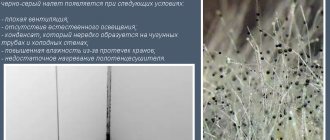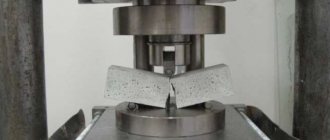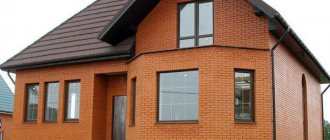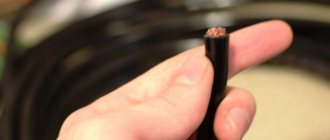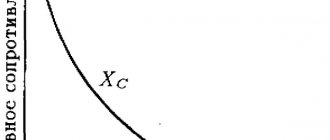INFORMATION DATA
1. DEVELOPED by the USSR Ministry of Construction Materials Industry
by the USSR State Committee for Construction Affairs
Ministry of Energy and Electrification of the USSR
INTRODUCED by the USSR Ministry of Construction Materials Industry
2. APPROVED AND ENTERED INTO EFFECT by Resolution of the USSR State Committee for Construction Affairs dated 08.21.81 N 151
3. INSTEAD GOST 310.4-76
4. REFERENCE REGULATIVE AND TECHNICAL DOCUMENTS
| Designation of the referenced technical document | Item number |
| GOST 310.3-76 | 1.2 |
| GOST 6139-91* | 2.1.1 |
| GOST 28840-90 | 1.9 |
_______________
* GOST 6139-2003 is in force on the territory of the Russian Federation, hereinafter in the text. — Note from the database manufacturer.
5. EDITION (April 2003) with Amendments No. 1, 2, approved in August 1984, May 1990 (IUS 1-85, 9-90)
This standard applies to cements of all types and establishes test methods for determining their flexural and compressive strength.
(Changed edition, Amendment No. 2).
Cement testing methods
The main task of cement is a strong connection of all components of the solution, ensuring the strength of concrete products and resistance to the effects of adverse factors of man-made and environmental factors. To determine the performance characteristics of cement, non-destructive and destructive testing techniques are used.
Experts use express methods for determining the grade strength of cement. To do this, the laboratory technician will use a special IAC device to determine the specific conductivity of the cement + water solution. Or he will use the VM-7.7 contractometer to calculate the coefficient of reduction in the volume of the water-cement mixture that occurs at the moment of hydration.
The advantage of these methods is speed. Testing takes from 20 minutes to a couple of hours. The weakness of such an assessment is the high error of the results and the need to build a calibration dependence for each brand of cement from different manufacturers.
Strength testing of cement according to GOST 310.4 is carried out by comparing the strength indicators of cement aged 3 days with similar data for a sample aged 28 days. For cements of various categories, this ratio is 50% of the total brand strength. The spread interval for different types of raw materials ranges from 41% to 59%.
Non-destructive research methods imply maintaining the integrity of the test sample. These laboratory tests allow us to establish:
- deformation coefficient of the finished product under mechanical influences (a load of a certain mass is dropped onto the surface and the shape and depth of the imprint are measured)
- the amount of energy released when a load collides with a surface
- the degree of elasticity of a concrete sample based on the force of rebound of the impact object from the tested surface.
For testing, a specialist prepares standard samples from a building mixture of a certain consistency. The number of components is set according to the recipe:
- 1.5 kg sand
- 0.5 kg cement
- 200 milliliters of water.
For the solution to completely harden, the samples are kept for 18 days, after which they are sent for research.
The expert studies the following technical indicators of cement:
- grinding size
- thickness standard
- water separation and water removal coefficient
- setting time of the solution
- activity when exposed to steam.
Studying the fineness of grinding
The size of individual particles in cement powder is defined as grinding fineness. It determines the ability for water saturation of raw materials and the formation of solid crystals. The finer the cement fraction, the higher the rate of formation of the strength of the concrete product.
CONDUCTING THE TEST
2.1. Determination of the consistency of cement mortar
2.1.1. To determine the consistency of the cement mortar, weigh out 1500 g of normal sand (according to GOST 6139), 500 and 200 g of water (0.40). The components are loaded into the bowl of a paddle mixer, previously wiped with a damp cloth, in the following sequence: sand, water, cement. The bowl is placed on a stirrer and stirred for (120±10) s.
When using a runner mixer, sand and cement are poured into a spherical bowl previously wiped with a wet cloth and mixed with a shovel for 1 minute.
Then make a well in the center of the dry mixture, pour water into it in an amount of 200 g (0.40), let the water soak in for 0.5 minutes and stir the mixture for 1 minute.
2.1.1.1. When using a runner mixer, it is allowed to mix cement and sand before and after adding water in mixers that ensure good mixing of the solution and do not change the grain composition of the sand.
2.1.2. When using a runner mixer, the solution is transferred to a stirrer bowl that has been previously wiped with a wet cloth and stirred for 2.5 minutes (20 revolutions of the stirrer bowl).
2.1.3. A cone shape with a centering device is installed on the shaking table disk. The inner surface of the cone and the table disk are wiped with a damp cloth before testing.
2.1.1.-2.1.3. (Changed edition, Amendment No. 2).
2.1.4. At the end of mixing, fill the cone mold to half the height with the solution and seal it with 15 bayonets with a metal bayonet. Then fill the cone with a slight excess of solution and bayonet it 10 times.
After compacting the top layer, excess mortar is removed with a knife located at a slight angle to the end surface of the cone, smoothing the mortar with pressure flush with the edges of the cone, then the cone is removed in the vertical direction. The knife is first wiped with a damp cloth.
(Changed edition, Amendment No. 1).
2.1.5. The solution is shaken on the table 30 times in (30±5) s, after which the diameter of the cone along the lower base is measured with a caliper in two mutually perpendicular directions and the average value is taken. The spread of a cone with 0.40 should be in the range of 106-115 mm. If the cone spread is less than 106 mm, the amount of water is increased to obtain a cone spread of 106-108 mm. If the cone spread is more than 115 mm, the amount of water is reduced to obtain a cone spread of 113-115 mm.
The water-cement ratio obtained when the cone spread reaches 106-115 mm is accepted for further testing.
2.2. Determination of tensile strength in bending and compression
2.2.1. Immediately before making samples, the inner surface of the walls of the molds and the tray is lightly lubricated with machine oil. The joints of the outer walls with each other and with the mold tray are coated with a thin layer of grease or other thick lubricant.
Place a nozzle on the assembled mold and coat the joint between the mold and the nozzle on the outside with thick lubricant.
(Changed edition, Amendment No. 1).
2.2.2. To determine the strength characteristics of cements, sample beams are made from cement mortar prepared as specified in paragraphs 2.1.1 and 2.1.2, with 0.40 and a consistency characterized by a cone spread of 106-115 mm. If at 0.40 the cone spread is less than 106 or more than 115 mm, the samples are made at the water-cement ratio determined according to clause 2.1.5.
2.2.3. For each established test period, three samples (one mold) are made.
2.2.4. To compact the solution, the form of beams with a nozzle, prepared according to clause 2.2.1, is fixed in the center of the vibrating platform, pressing it tightly against the slab. It is allowed to install two forms, symmetrically located relative to the center of the vibrating platform, provided they are filled simultaneously.
The height of the mold is filled to approximately 1 cm with the solution and the vibration platform is turned on. During the first 2 minutes of vibration, all three cavities of the mold are filled evenly with small portions of the solution. After 3 minutes from the start of vibration, the vibration platform is turned off. The form is removed from the vibrating platform and the excess solution is removed with a knife located at a slight angle to the laying surface, smoothing the solution flush with the edges of the form with pressure. Samples are labeled. The knife must first be wiped with a damp cloth.
2.2.5. After production, the samples in the molds are stored (24±1) hours in a bath with a hydraulic seal or in a cabinet providing a relative air humidity of at least 90%.
2.2.4, 2.2.5. (Changed edition, Amendment No. 1).
2.2.6. After the storage time specified in clause 2.2.5, the samples are carefully unmolded and placed in baths with drinking water in a horizontal position so that they do not come into contact with each other.
Water should cover the samples by at least 2 cm. The water should be changed every 14 days. The water temperature during replacement should be (20±2) °C, as when storing samples.
2.2.6.1. Samples that have strength after (24±1) hours that is insufficient for unmolding without damage are allowed to be removed from the mold after (48±2) hours, indicating this period in the work log.
(Changed edition, Amendment No. 1).
2.2.7. After the storage period has expired, the samples are removed from the water and tested no later than 30 minutes later. Immediately before testing, the samples must be wiped.
(Changed edition, Amendment No. 2).
2.2.8. Determination of bending strength
The sample is placed on the supporting elements of the device in such a way that its horizontal edges are in a vertical position during manufacture. The layout of the sample on the supporting elements is shown in Figure 6. Samples are tested in accordance with the instructions supplied with the device.
2.9.9. The bending strength is calculated as the arithmetic mean of the two highest test results of three samples.
2.2.10. Determination of compressive strength
The six beam halves obtained after the bending test are immediately subjected to a compression test. Half of the beam is placed between two plates in such a way that the side faces, which during manufacturing were adjacent to the walls of the mold, are on the planes of the plates, and the stops of the plates fit tightly to the smooth end plane of the sample (Fig. 8). The sample along with the plates is centered on the press base plate. The average rate of load increase during testing should be (2.0±0.5) MPa/s. It is recommended to use a device that automatically maintains the standard loading rate of the sample.
Position of the sample between the pressure plates during the compression test
1 — lower plate of the press; 2 - plates; 3 - upper plate of the press
Damn.8
(Changed edition, Amendment No. 1).
2.2.11. The compressive strength of an individual sample is calculated as the quotient of the breaking load (in kgf) divided by the working area of the plate (in cm), i.e. by 25 cm.
2.2.12. The compressive strength is calculated as the arithmetic mean of the four highest test results of six samples.
2.3. Determination of cement strength during steaming
2.3.1. Samples for determining the strength of cement during steaming are prepared in accordance with paragraph 2.1. and 2.2. To protect the surface of the sample from condensation, the molds are covered with plates made of corrosion-resistant materials and which do not exert pressure on the samples. Forms with samples are placed in a steaming chamber, where they are kept for (120±10) minutes at a temperature of (20±3) °C (with heating turned off).
(Changed edition, Amendment No. 2).
2.3.2. Steaming is carried out according to the following regime:
— uniform temperature rise to (85±5) °C ... (180±10) min
— isothermal heating at a temperature of (85±5) °С ... (360±10) min
— cooling of samples with heating turned off... (120±10) min.
Then open the chamber cover.
2.3.3. After (24±2) hours from the moment of manufacture, the samples are unmolded and immediately tested in accordance with clause 2.2.
Types of cement tests
Based on government requirements, cement testing tests several key properties. These include:
- Ultimate strength in bending and compression.
- Grinding fineness.
- Normal density and time required for setting.
- The degree of uniformity of changes in volume.
The indicators calculated during testing depend, among other things, on the composition of the cement, the structure of the minerals from which it is made, as well as the presence of additives and their characteristics.
